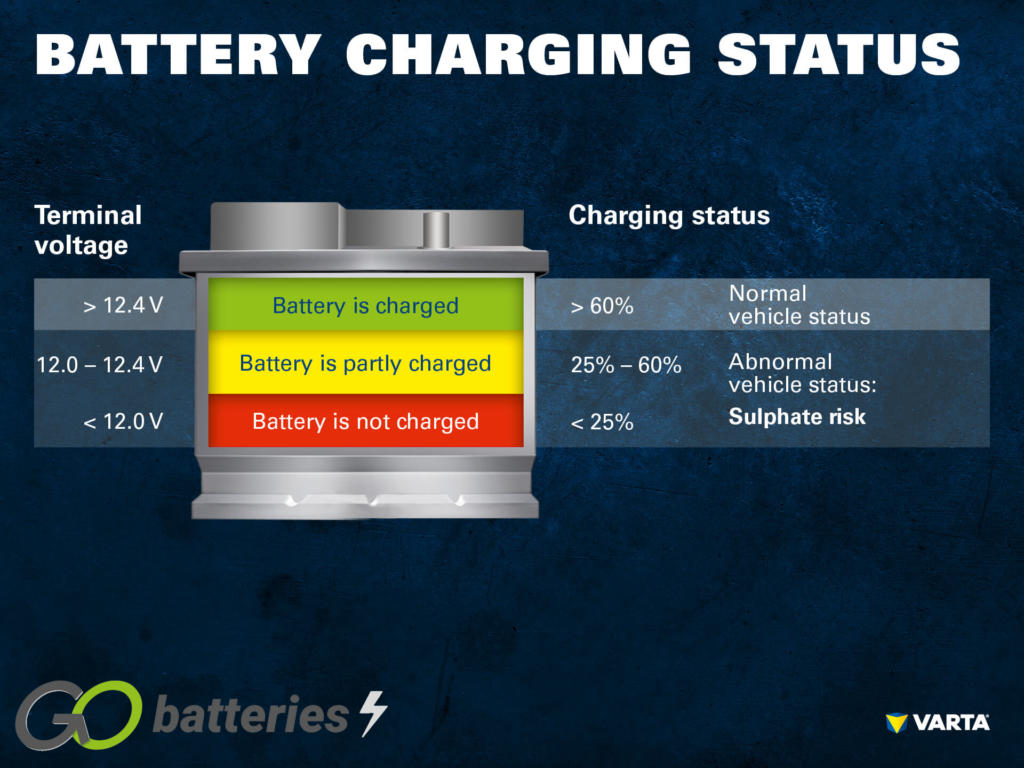
How To Check and Test a Lawnmower Battery
It is always good practice to check the level of charge and general condition of your lawnmower battery. Here we will help you understand how to check the charge in your lawnmower battery using a multi-meter or voltmeter and what other helpful checks you can carry out.
How Many Volts Should a Lawnmower Battery Have?
A good healthy lawnmower battery should register between 12.6 to 12.7 volts. Due to the way batteries discharge it’s very important that you test the battery after it has been sitting (not running) for at least an hour, in order to get the resting voltage of the battery. Testing the battery just after use will give an inaccurate reading! The best option would be to leave your lawnmower overnight and test the battery the next morning before using it, this would accurately gauge the health of your battery.
Locate your battery, if it’s not obvious then consult the owner’s manual. In more modern lawnmowers and tractors the batteries can be encased in a plastic shroud or cover, these will either unclip, lift off or sometimes require unfastening some bolts or screws. Once you can see the battery you may find that the positive terminal has a red cover, this will lift off or pull back to expose the terminal below, you could find a black cover on the negative terminal in some cases, again this should pull back or lift off.
Once both the battery terminals are exposed be extremely careful not touch both of the terminals with anything metal, this will cause a short circuit!

How To Test a Lawnmower Battery With a Multimeter
You will first want to make sure you have your multi-meter (also known as a digital voltmeter) correctly to measure DC voltage, this is indicated with a dashed line and a solid line and above a letter V. You need to have the dial set to 20 which will accurately measure between 0-20 volts. If the reading blinks when it’s not attached to anything, you may need to replace the multi-meter’s internal battery.


Take the red probe and place this on the positive terminal of the battery, the positive terminal is usually marked red and carries a + symbol. Taking the black probe and likewise place this on the negative terminal of the battery, the negative terminal of the battery is usually marked black and carries a – symbol. The reading for a fully charged battery should read 12.6 to 12.7 volts, some AGM batteries can be 12.8 volts, if you have a reading which is showing -12.6 or -12.7 then you have the probes the wrong way round.
As mentioned previously, a fully charged battery is 12.6 to 12.7 volts and the resting voltage, ideally should be no lower than this. But how does that help us define a half charged or even flat battery? A rule of thumb is that a battery reading 12.4 volts is half charged and a battery reading of 12.2 volts is flat, there are occasions where a lawnmower may start at 12.2 volts but this would be rare and you are at a dangerous level where your lawnmower will suddenly not start. Below 12 volts is classed as discharged and the lower the voltage drops is deep discharge and sulphation will occur.
Modern lawn tractor and some larger mowers may experience a power drain if the starting key is left in the ‘on’ position, be sure that the key is in the ‘off’ position when you have stopped the engine.
It is good practice to regularly check the charge in your battery, if you find the battery requires charging then place it on charge with the appropriate battery charger and then test the battery after resting the battery overnight. If you are planning on storing the lawnmower or tractor you can either disconnect the battery, or remove it entirely.

How To Test The Charging System With a Multimeter
It’s important to mention that the alternators job is to produce electricity and charge the battery, this needs to be done so the lawnmower or tractor has sufficient charge to start the next time you come to use it. Whilst driving along the alternator takes on the role of delivering power to the electrical systems and also supplying charge to the battery. It is important to remember that if you have a deeply discharged battery, the alternator alone will not be able to fully charge your battery, this can only be achieved by charging the battery on a battery charger.
In order to check the alternator is supplying the correct amount of charge, with the engine running, place the probes of your multi-meter (as previously mentioned above) on the battery terminals. A healthy charging system should give the results of between 13.6 volts and 14.4 volts at idle tick over.
If you have a reading below 13.6 volts then the alternator isn’t supplying the power required in order to keep the electrical systems running and your battery charged, ready for your next start. This is where a resulting flat or discharged battery can occur and simply replacing the battery will not cure the problem. Similarly, having a reading above 14.4 volts is over-charging the battery and effectively cooking it, which in turn will boil away the electrolyte. Whether your alternator is under-charging or over-charging, either will great reduce the battery life and need a professional to investigate and remedy the issue.

















